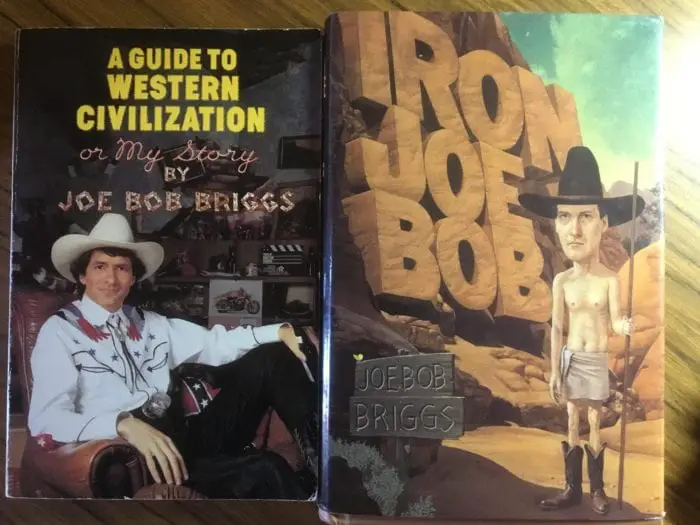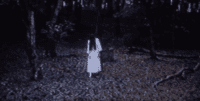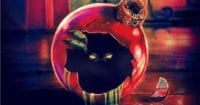John Bloom has told us before of his entrance into the world of his characterization as Joe Bob Briggs and of his time on the Dallas Times Herald into becoming a television personality. The books of Joe Bob Briggs—this excludes John Bloom’s Body of Evidence in favor of works claiming to be authored by the personality of Joe Bob—illustrate his caricature and his often pithy understanding of Hollywood’s B, C, and X histories of drive-in lore. Fascinating behind-the-scenes features of some of these lesser appreciated productions, like say Joe Bob’s first-ever-reviewed film Anthropophagus, are getting packaged and repackaged to us on newer and more exciting mediums every so many months these days that maybe we lose our appreciation for the ephemera, such as commentaries, somewhere in the context of so much access. Gone are the days of Leonard Maltin’s annual print movie guides that accompanied our walks through VHS rental stores and to friends’ and neighbors’ Academy Awards viewing parties and movie nights. Some of you might remember that fresh newspaper print smell as you flipped through them.
As a fan of film, or as someone who wants to know more about marginalized film, you can relive the days of drive-ins (“out under the stars like God intended”) and VHS releases (“indoor bullstuff”) with his books. The difference from the barrage of special features in light of Joe Bob Briggs’s return to Shudder is that his books have somewhat of a scarcity to them. They have not returned repackaged in foil sleeves or been distributed as Penguin Classics. Outside of archived footage from At the Drive-in and MonsterVision, they act as special features to the persona of Joe Bob Briggs, and they are not the easiest to access if A) your finger hasn’t already been on the pulse of collecting his material, B) your library didn’t have them in their collecting scopes, or C) you’re a popular culture fan who can’t afford to buy market-priced used books now that you’ve discovered or re-discovered his personality through Shudder. Plus, they’re print only, and they are out-of-print! Well, I’ll tell you what; I’ve purchased what I can, and we’ll talk about what we might have missed out on the first go-‘round. The Cosmic Wisdom of Joe Bob Briggs (1990) is not covered here based on access to this writer, but a clear enough picture can be ascertained.

Joe Bob Goes to the Drive-in (1985) and Joe Bob Goes Back to the Drive-in (1989)
In grouping the books somewhat thematically, first up are Joe Bob Goes to the Drive-in and Joe Bob Goes Back to the Drive-in, a collection of his movie reviews with letters and editorials included. Goes runs from 1982-1985 with Goes Back running from 1985-1987. Each column has an introductory portion where the first half of the write-up is a fictional imagining of the goings-on in the character of Joe Bob’s life leading up to his viewing of the film. He has recurring characters in these narratives that if not completely fictional are at least exaggerated pseudonyms like Jack Kerouac’s Dean Moriarty (Neal Cassidy) and Old Bull Lee (William S. Burroughs). Some of these characters include Bobo Rodriguez (his original choice for his own character’s name before Joe Bob), May Ellen Masters, Horace Busby, etcetera. Gary Alan Crowdus of Cinéaste explains it in a piece titled after the book which was later used as an introduction piece for Joe Bob Goes Back to the Drive-in.
…[J]oe Bob practices a kind of Bottom Line Film Criticism, and the typical Joe Bob review—which is usually preceded by some outspoken social commentary or rambling accounts of encounters with one or more of his four ex-wives, current girlfriends or oddball buddies—consists of a colorful plot synopsis and a concluding paragraph which rates the crucial ingredients , depending upon the category of film being reviewed, essential to any exploitation film worthy of the name. [1]
In his later career, Joe Bob Briggs would become a late-night B-movie host in the vein of horror hosts Vampira, Elvira, Svengoolie, etcetera, as well as the nineties’ somewhat direct competition to USA’s Up All Night hosted by Rhonda Shear with occasional guest Gilbert Gottfried. With these collected introductory fictions, a fan would have almost a completely formed background story on Joe Bob Briggs’ character within the first few years of his movie reviews. That is partly what Joe Bob Goes to the Drive-in does for readers, but then, there is the other half of each column, which are the actual reviews. Upfront, I can tell you that if you enjoy the fictional world of Joe Bob, that’s almost predominately the make-up of A Guide to Western Civilization and Iron Joe Bob. But like his introductions on The Last Drive-in and previous on-the-air shows, this portion of his writing is also where you get his social commentary or satire. We’ll get to those points.
Perhaps it is not a coincidence that the columns for Goes end in 1985. That is a year that marks the cancelation of his syndicated column in a debacle that brings up many of today’s questions we see regarding social media and political climate. As reported in Jet magazine “A column called ‘Joe Bob Goes to the Drive-In’ has been dropped by the Dallas Times Herald and the Los Angeles Times Syndicate, which distributes the feature to fifty other newspapers. A column spoofing the famine relief effort ‘We Are the World’ brought charges of racism from readers. The column was titled “Joe Bob, Drive-In Artists Join Forces for Minorities With ‘We Are the Weird’.”[2] The Dallas Time Herald refused to print his resignation letter, which was then picked up by The Dallas Observer, where his column would continue for its final run. He has recently addressed his censorship in an interview with the Dallas Observer upon his successful return to Shudder. “Here’s what confuses me,” Briggs says. “When I was much, much younger and I first started writing my columns, at the old Times Herald, I would frequently be censored, and they would always say, ‘This stuff offends the older people, Joe Bob.’ And so we would have to take it out. And now I say stuff, similar stuff, almost the same type of tone, and they say, ‘Joe Bob, this offends the younger people.’”[3]
As Barry Alan Morris writes in his paper “The Communal Constraints on Parody: The Symbolic Death of Joe Bob Briggs” and as it might apply to the following books as well: “So an understanding of when the humorist goes “too far”—when good humor becomes bad taste—is of more than passing concern to the study of rhetoric and popular culture. …what interpretive process takes place between speaker and auditor that causes a positive, well-received channel of humorous communication (in this case parody) to be redefined by the audience as an unwarranted or inappropriate attack[?]”[4] The context of this history for Joe Bob’s columns is important in approaching his earliest books from 1985-1992. There is an evolution of the character and the writer with everyone’s favorite parts intact. The point with Goes and Goes Back is that they are collected for fans of Joe Bob’s, but they also collect the writings of a period that led to so many letters of complaint against him. It stands to define who he would mostly remain in his future writings.
These books were not exactly low profile. The introduction to the first is written by Stephen King who claims “Banned in Dallas? Say what, boy? Only one time it’s been done, so far as I know. … In his hotly controversial career, Joe Bob himself is the only one who has remained constantly cool and above the fray, rating pictures according to kung fu, breast count, how many heads roll, and other criteria that really matter to the hardcore drive-in patrons across the United States.”[5] Goes Back netted an introduction by Wayne Newton. Now that I think about it, just how exactly did Joe Bob not end up with a feature film by Tim Burton (think Pee Wee’s Big Adventure) or at least a cameo in Mars Attacks!? Anyhow, as King states, let’s stay cool and above the fray by briefly turning to the film review portions of each.
Several of the titles he reviews will bring a smile to your face either because you know it as a personal favorite or wondering how in the hell he managed to get through it with a three-star review. Then, there are those you probably don’t remember: “Intimate Moments, or, Will Joe Bob Be Able to Keep This Review Clean?” Excerpt: “Good scene. Plenty of breasts. Moaning. Thighs. Long camera shots. The movie’s getting down to business. Then there’s a lot of plot before the next one … So I’d sum it up as a pretty decent breast flick. They all get nekkid. Good moaning. Not too kinky. Three and a half stars.”[6] Of course, there are those you do remember: “Joe Bob’s Best of ’82: Basket Case Makes Its World Drive-in Premiere”; “J.B. Gives In, Reviews Friday the 13th, Part 3, 3-D by Popular Demand.” Excerpt: “Friday the 13th, Part 3 is okay, though, even though I thought it was indoor bullstuff. No kung fu. Approximately two bare tops. Thirteen corpses. Heads roll. Three stars. Joe Bob says check it out.”[7]
Joe Bob Goes Back to the Drive-In almost begins with a review of Lust in the Dust. Instead, most of the space is dedicated to his return to his column, an equally offensive rebuke of the Crimes Herald’s actions against him. Once that is out of the way, Joe Bob is back in his ’73 Oldsmobile Toronado as he begins to cover films that maybe our audiences will be even more familiar with: Cat’s Eye, Rambo II, Critters, ending on David Cronenberg’s The Fly.

A Guide to Western Civilization, or My Story (1988) and Iron Joe Bob (1992)
Joe Bob’s satire or parody has an ability to infiltrate your views but upset both sides of an argument. For instance, the title Iron Joe Bob is a poke at Iron John the male chauvinist (or Men’s Movement) reclamation text of the early 90s, but his character up to that point is completely chauvinistic as a poke in the eye to Feminism gone awry of its intent. As Crowdus explains: “Although he has poked fun at feminists, gays, [B]lacks, Hispanics, leftists, animal rights activists, and fundamentalist preachers, among others, ‘the first target of Joe Bob’s column,’ Bloom has explained, ‘is always Joe Bob. That’s the saving grace of it.’”[8]
This was not uncommon controversy to the period as we’ve already seen and continue to experience almost daily in 2018. Barry Alan Morris’s essay on the Joe Bob debacle of 1985 written in 1987 reads like it was from 2011. That almost gives some context, doesn’t it? With Joe Bob’s return to Shudder, he now has an on-stage, millennial check and balance in the guise of “Darcy the Mail Grrrl.” And while Joe Bob wasn’t the originator of the controversies, the drive-in and Roger Corman fare he chose to cover was still considered pornography at the time of his coverage. That well accounts for his being one of the very few to review them. The topics covered included Satanism, teenage sex, violent revenge, cannibalism, and almost every other available exploitative grab. A Guide to Western Civilization, or My Story is a fictional autobiography of Joe Bob Briggs. See the following review in the Library Journal.
Briggs, familiar to cable TV viewers as the host of a weekly feature on The Movie Channel, has written what might be called the only 100 percent fact-free autobiography ever written, starting with his “birthplace” of Western Civilization, Texas. Briggs fulfills his promise that he will not stay on the subject—because life never does—by rambling over a wide range of subjects, including sex education, topless bars, bass fishing, the National Organization of Women, immigration laws, and encyclopedias. …Briggs’s will be at home only in large libraries with broad collection development. [9]
Equally unflattering reviews were given to Iron Joe Bob. Regardless of the public’s perceptions, fans will find plenty of his irreverent humor and often uncomfortable truths regarding how we balk at things we either can-and-do-not or try-and-cannot change. His approach is humor, and his reward is that his books become literary versions of the movies he reviews—marginalized, misunderstood, and uproariously intentional. These two volumes—I suspect The Cosmic Wisdom of Joe Bob Briggs might accompany them—make up what reviewers considered his weakest print works. Our count? 400 pages of irreverent humor, 8 “spear” chapters, 1 titty bar chapter, .05 facts, only 1 Joe Bob. Might check ‘em out.
Profoundly Disturbing: Shocking Movies That Changed History (2003) and Profoundly Erotic: Sexy Movies that Changed History (2005)
These final two volumes, aside from his magazine articles, represent an extremely welcome return of Joe Bob Briggs’s filmic insight. Both volumes were released in the early 2000s after the finale of TNT’s MonsterVision in September 17, 2000. As Joe Bob explains, every film he covers—he covers 15 in PD and 10 in PE—has been “banned, censored, condemned, or despised.” For the film auteur, collector, or fan, I cannot imagine that these books could be missing from your shelves. I’ve mentioned irreverence in regard to Joe Bob’s previous books and reviews, but what we find in his narrowed attention onto these sign-post films are nothing short of reverence. The movies in Profoundly Disturbing are often commented upon as having P.T. Barnum-level promotion and marketing. Their releases created media circuses, and that’s why Briggs has included them for examination and honor. The films that followed each release owed a Hollywood thanks to the bravery of their directors and the riskiness of their content.
You see renewed appreciation in the reviews for these works. Three years away from the character of Joe Bob Briggs appreciated the legacy well. In a book review of Profoundly Disturbing in Publisher’s Weekly, we read, “…an acknowledged king of cult movie history … Briggs touches thoughtfully on controversial interpretations … The author also writes with insight and affection … The book merits attention from fans tired of high-minded essays about classics such as Citizen Kane…”[10] The bottom line is that not only do these books reflect Briggs’s affection for marginalized and shocking film, in my opinion, they pivot his legacy from the previous books, picking up the perspicacity of his on-air commentary with the Pulitzer-nominated journalistic sensibility of John Bloom into the characterization of Joe Bob Briggs we see on Shudder today. At 25YL, not only are we proud to set down our remotes and pick up his books from time to time, we’re thrilled to be living in a time of a Twin Peaks return and a Joe Bob Briggs resurrection some 18 years later. That’s if you know what I mean, and I think you do.
[1] Crowdus, Gary Alan. “JOE BOB GOES TO THE DRIVE-IN.” Cinéaste 16, no. 4 (1988): 32-37.
[2] “Dallas Paper Drops Column after Racism Charge Flak.” Jet 68, (1985): 5-6.
[3] Lacour, Brad. “Joe Bob Briggs Keeps Decades-Old Promise and Films Movie Marathons in DFW,” Dallas Observer, November 26, 2018. Accessed December 12, 2018 from https://www.dallasobserver.com/arts/joe-bob-briggs-is-back-with-a-very-joe-bob-christmas-11382817
[4] Morris, Barry Alan. 1987. “The Communal Constraints on Parody: The Symbolic Date of Job Bob Briggs.”
[5] Stephen King, introduction to Joe Bob Goes to the Drive-in, by Joe Bob Briggs, (London: Penguin Group, 1989), 1.
[6] Briggs, Joe Bob. Joe Bob Goes to the Drive-in, (London: Penguin Group, 1989), 30-31.
[7] Briggs, 77.
[8] Crowdus, p. 37.
[9] Phifer, Ken, and Nora Rawlinson. “A Guide to Western Civilization, or My Story/Life and Other Ways to Kill Time… (Book).” Library Journal 113, no. 16 (October 1988): 87. http://search.ebscohost.com.lib-e2.lib.ttu.edu/login.aspx?direct=true&db=a9h&AN=6552018&site=ehost-live.
[10] Gold, Sarah F., Emily Chenoweth, and Jeff Zaleski. 2003. “PROFOUNDLY DISTURBING (Book).” Publishers Weekly 250 (9): 65. http://search.ebscohost.com.lib-e2.lib.ttu.edu/login.aspx?direct=true&db=a9h&AN=9207098&site=ehost-live.


